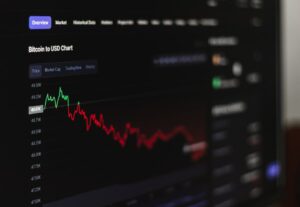Understanding the Basics of Forex Swap: What it Means and How it Affects Your Trades
The forex market is the largest and most liquid financial market in the world, where currencies are traded 24 hours a day, five days a week. Traders participate in this market to speculate on currency exchange rates and profit from the fluctuations. However, trading in the forex market involves more than just buying and selling currencies at different prices. One important concept that traders should understand is the forex swap.
What is a Forex Swap?
A forex swap, also known as a currency swap or an FX swap, is a financial instrument that allows traders to exchange one currency for another on a specific date and then reverse the transaction at a later date. It involves the simultaneous buying and selling of two currencies with different settlement dates. The swap is essentially an agreement between two parties to exchange the principal amount of a currency pair at a predetermined exchange rate, with the understanding that the positions will be reversed at a future date.
How Does a Forex Swap Work?
To better understand how a forex swap works, let’s consider an example. Suppose a trader wants to buy 100,000 euros against US dollars. The trader would enter into a forex swap agreement with a counterparty, such as a bank or a broker. The agreed-upon exchange rate is 1.20, which means the trader will receive $120,000 in exchange for 100,000 euros.
The trader will hold the position until the settlement date, which is typically two business days after the execution date for major currency pairs. On the settlement date, the trader will receive the agreed-upon amount in US dollars and deliver the 100,000 euros to the counterparty. At the same time, the trader will enter into the reverse transaction, agreeing to sell the 100,000 euros back to the counterparty at a future date and at an agreed-upon exchange rate.
Understanding the Rollover Aspect
One essential feature of a forex swap is the rollover aspect. Since the settlement date of the swap transaction is typically two business days after the execution date, traders who want to hold their positions for longer periods must roll over their swap agreements. This means that on the settlement date, the trader will enter into a new swap agreement with a new settlement date, effectively extending the duration of the original swap.
The rollover aspect of forex swaps is important because it involves the payment or receipt of interest on the notional amount of the swap. The interest rates associated with each currency in the currency pair determine the swap points, which are the number of pips added or subtracted from the spot exchange rate to calculate the forward exchange rate. If the interest rate of the currency being bought is higher than the interest rate of the currency being sold, the trader will earn a positive swap, meaning they will receive an additional amount of money on top of the spot exchange rate. Conversely, if the interest rate of the currency being bought is lower than the interest rate of the currency being sold, the trader will pay a negative swap.
How Does a Forex Swap Affect Your Trades?
The impact of forex swaps on your trades depends on various factors, including the duration of your position, the interest rate differentials between the currencies in the pair, and the direction of the interest rate changes. If you are a short-term trader who closes their positions before the settlement date, forex swaps may not have a significant impact on your trades. However, if you hold your positions for longer periods and roll over your swap agreements, the swap points can either work in your favor or against you.
It is important to note that forex swaps are not commissions or transaction costs but rather adjustments for the interest rate differentials between currencies. They can either be a source of additional income or an additional cost, depending on the circumstances. Traders should carefully consider the potential impact of swaps on their trades and factor them into their risk management strategies.
Conclusion
Understanding the basics of forex swaps is crucial for forex traders. A forex swap is a financial instrument that allows traders to exchange one currency for another and reverse the transaction at a future date. The rollover aspect of forex swaps involves the payment or receipt of interest on the notional amount of the swap. The interest rate differentials between the currencies in the pair determine the swap points, which can either result in a positive swap or a negative swap. Traders should consider the impact of swaps on their trades and incorporate them into their risk management strategies to make informed trading decisions.






